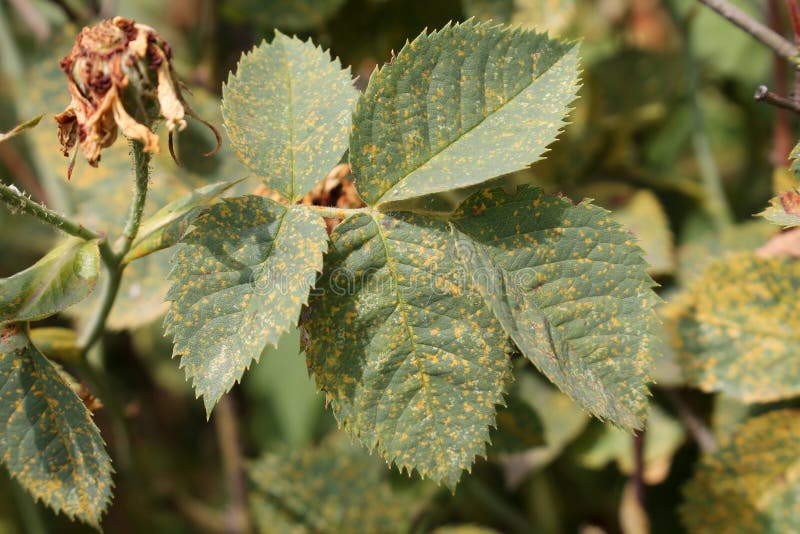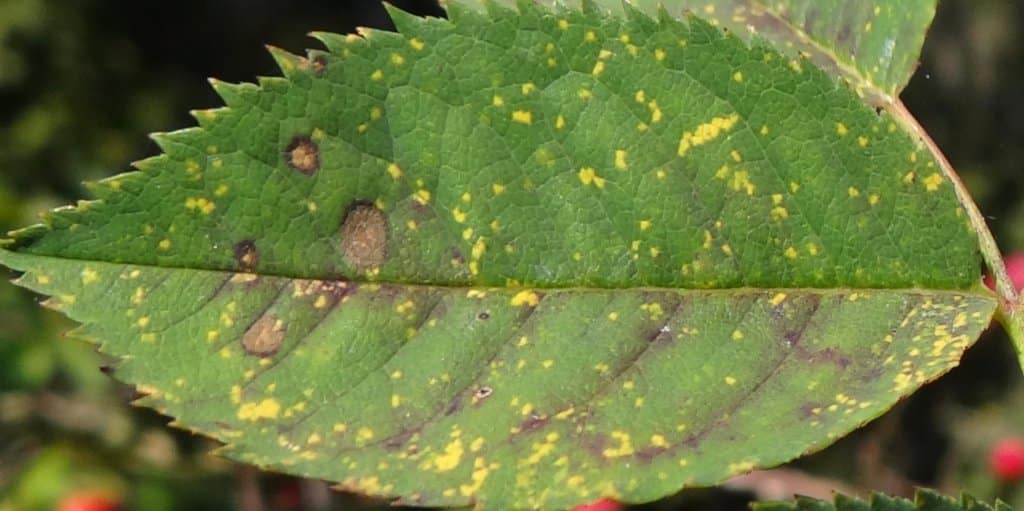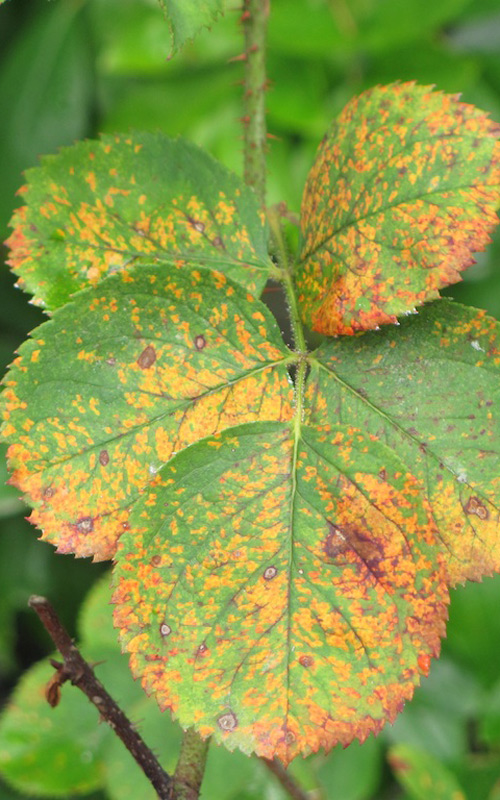What are Rust Spots on Rose Leaves: Understanding the Causes and Symptoms
Rust spots on rose leaves are a common problem that can affect the health and appearance of these beautiful flowers. The main cause of rust spots is a fungal infection, which can be triggered by environmental factors such as high humidity, poor air circulation, and excessive watering. Pests like aphids, whiteflies, and spider mites can also contribute to the development of rust spots by spreading fungal spores and creating an environment conducive to infection.
The symptoms of rust spots on rose leaves can vary depending on the severity of the infection. Common signs include yellowing leaves, black spots, and a powdery residue on the surface of the leaves. In severe cases, the leaves may become distorted, curled, or drop off entirely. It’s essential to identify the problem early on to prevent the spread of the infection and minimize damage to the plant.
Rust spots on rose leaves can be caused by several species of fungi, including Phragmidium mucronatum and Phragmidium tuberculatum. These fungi thrive in environments with high humidity and temperatures between 64°F and 75°F (18°C and 24°C). To manage rust spots, it’s crucial to understand the underlying causes and take steps to prevent the spread of the infection.
In addition to fungal infections, environmental factors can also contribute to the development of rust spots on rose leaves. For example, poor air circulation can create a humid microclimate that fosters fungal growth. Similarly, excessive watering can lead to waterlogged soil, which can increase the risk of root rot and other problems.
By understanding the causes and symptoms of rust spots on rose leaves, gardeners can take proactive steps to prevent the problem and protect their plants. This includes implementing good gardening practices, such as providing adequate air circulation, watering carefully, and monitoring plants regularly for signs of infection.
How to Inspect Your Rose Plants for Rust Spots: A Step-by-Step Guide
Inspecting your rose plants regularly is crucial for detecting rust spots on leaves early on. By catching the problem early, you can prevent the spread of the infection and minimize damage to the plant. Here’s a step-by-step guide on how to inspect your rose plants for rust spots:
Step 1: Choose the Right Time
The best time to inspect your rose plants for rust spots is during the cooler part of the day, such as early morning or late afternoon. Avoid inspecting your plants during the hottest part of the day, as this can cause the leaves to become stressed and make it harder to detect rust spots.
Step 2: Look for Yellowing Leaves
Start by inspecting the leaves of your rose plant for any signs of yellowing or discoloration. Rust spots on leaves can cause the leaves to turn yellow or become distorted, so keep an eye out for any unusual color changes.
Step 3: Check for Black Spots
Next, inspect the leaves for any black spots or powdery residue. Rust spots on leaves can appear as small, black spots or a powdery coating on the surface of the leaves. Use a magnifying glass or hand lens to get a closer look at the leaves and detect any rust spots.
Step 4: Inspect the Underside of Leaves
Don’t forget to inspect the underside of the leaves, as rust spots can also appear on the underside of the leaves. Use a magnifying glass or hand lens to get a closer look at the underside of the leaves and detect any rust spots.
Step 5: Monitor for Pest Infestations
Finally, monitor your rose plants for any signs of pest infestations, such as aphids, whiteflies, or spider mites. These pests can contribute to the development of rust spots on leaves, so keep an eye out for any unusual insect activity.
By following these steps, you can detect rust spots on your rose plants early on and take action to prevent the spread of the infection. Remember to inspect your plants regularly, as rust spots can develop quickly and cause significant damage to the plant.
Rust-Resistant Rose Varieties: Exploring Your Options
One of the most effective ways to prevent rust spots on rose leaves is to grow rust-resistant rose varieties. These varieties have been bred to have natural resistance to rust diseases, reducing the need for fungicides and other treatments. In this section, we’ll explore some popular rust-resistant rose varieties and their characteristics.
‘Knock Out’ Roses
‘Knock Out’ roses are a popular choice for gardeners looking for rust-resistant varieties. These roses are known for their vibrant colors, disease resistance, and low maintenance requirements. ‘Knock Out’ roses are also self-cleaning, meaning they drop their spent blooms, reducing the risk of rust spots.
‘Drift’ Roses
‘Drift’ roses are another popular rust-resistant variety. These roses are compact, repeat-blooming, and have a high level of disease resistance. ‘Drift’ roses are also heat-tolerant and drought-resistant, making them an excellent choice for gardeners in warm climates.
‘Home Run’ Roses
‘Home Run’ roses are a type of shrub rose that is known for its rust resistance and low maintenance requirements. These roses produce vibrant, fragrant blooms and have a compact growth habit, making them an excellent choice for small gardens or containers.
Benefits of Rust-Resistant Rose Varieties
Rust-resistant rose varieties offer several benefits to gardeners, including reduced maintenance requirements, improved plant health, and increased yields. By growing rust-resistant varieties, gardeners can reduce their reliance on fungicides and other treatments, creating a more sustainable and environmentally friendly gardening practice.
How to Choose Rust-Resistant Rose Varieties
When choosing rust-resistant rose varieties, look for plants that have been bred specifically for disease resistance. Check the plant label or consult with a nursery professional to ensure the variety you choose has natural resistance to rust diseases. Additionally, consider factors such as climate, soil type, and desired bloom color when selecting a rust-resistant rose variety.
Organic and Chemical Controls for Rust Spots on Rose Leaves
Once rust spots have been identified on rose leaves, it’s essential to take action to control the spread of the disease. There are several organic and chemical control methods available, each with its pros and cons. In this section, we’ll explore the different control methods and provide tips for application.
Organic Controls
Neem oil is a popular organic control method for rust spots on rose leaves. Neem oil is derived from the seeds of the neem tree and has natural fungicidal properties. It can be applied to the leaves of the rose plant to control rust spots and prevent further infection.
Sulfur is another organic control method that can be used to control rust spots on rose leaves. Sulfur has natural fungicidal properties and can be applied to the leaves of the rose plant to control rust spots and prevent further infection.
Chemical Controls
Chlorothalonil is a chemical fungicide that can be used to control rust spots on rose leaves. Chlorothalonil is a broad-spectrum fungicide that can be applied to the leaves of the rose plant to control rust spots and prevent further infection.
Pros and Cons of Each Method
Each control method has its pros and cons. Organic controls like neem oil and sulfur are generally safer for the environment and human health, but may not be as effective as chemical controls. Chemical controls like chlorothalonil are generally more effective, but can have negative environmental and human health impacts if not used properly.
Tips for Application
When using any control method, it’s essential to follow the instructions carefully and take necessary precautions to avoid exposure. Always wear protective clothing, including gloves and eyewear, when applying control methods. Additionally, make sure to read the label carefully and follow the recommended application rates to avoid over-application.
Precautions and Safety Measures
When using control methods, it’s essential to take necessary precautions to avoid exposure. Always wear protective clothing, including gloves and eyewear, when applying control methods. Additionally, make sure to read the label carefully and follow the recommended application rates to avoid over-application.
Preventing Rust Spots on Rose Leaves: Cultural and Environmental Factors
Rust spots on rose leaves can be prevented by modifying cultural and environmental factors that contribute to their development. In this section, we’ll discuss the importance of watering practices, soil quality, and air circulation in preventing rust spots on rose leaves.
Watering Practices
Over-watering is a common mistake that can lead to rust spots on rose leaves. When the soil is consistently waterlogged, it creates an ideal environment for fungal growth. To prevent rust spots, make sure to water your rose plants in the morning, so the leaves have a chance to dry out before nightfall. Avoid getting water on the leaves or crown of the plant, as this can encourage fungal growth.
Soil Quality
Soil quality plays a crucial role in preventing rust spots on rose leaves. Well-draining soil with a pH between 6.0 and 6.5 can help prevent rust spots. Avoid using soil that is high in nitrogen, as this can promote lush growth that is more susceptible to rust spots.
Air Circulation
Air circulation is essential for preventing rust spots on rose leaves. Good air circulation can help prevent fungal growth by reducing humidity and promoting healthy growth. Make sure to provide enough space between plants and avoid crowding, which can reduce air circulation and promote fungal growth.
Other Cultural and Environmental Factors
In addition to watering practices, soil quality, and air circulation, other cultural and environmental factors can contribute to rust spot development. These include temperature, humidity, and light exposure. Make sure to provide your rose plants with the right conditions for healthy growth, and avoid exposing them to extreme temperatures, humidity, or light.
Tips for Modifying Cultural and Environmental Factors
To modify cultural and environmental factors and prevent rust spots on rose leaves, follow these tips:
– Water your rose plants in the morning to allow the leaves to dry out before nightfall.
– Use well-draining soil with a pH between 6.0 and 6.5.
– Provide enough space between plants to promote good air circulation.
– Avoid exposing your rose plants to extreme temperatures, humidity, or light.
Common Mistakes to Avoid When Treating Rust Spots on Rose Leaves
When treating rust spots on rose leaves, it’s essential to avoid common mistakes that can exacerbate the problem or lead to further damage. In this section, we’ll discuss the most common mistakes to avoid and provide advice on how to correct them.
Over-Watering
Over-watering is a common mistake that can lead to rust spots on rose leaves. When the soil is consistently waterlogged, it creates an ideal environment for fungal growth. To avoid over-watering, make sure to water your rose plants in the morning, so the leaves have a chance to dry out before nightfall.
Under-Treating
Under-treating rust spots on rose leaves can lead to further damage and the spread of the disease. When treating rust spots, make sure to use the recommended amount of fungicide and follow the instructions carefully. Under-treating can lead to the development of resistant fungal strains, making it more challenging to control the disease.
Using the Wrong Fungicides
Using the wrong fungicides can lead to further damage and the spread of the disease. When choosing a fungicide, make sure to select one that is specifically designed to control rust spots on rose leaves. Avoid using broad-spectrum fungicides, as they can harm beneficial insects and microorganisms in the soil.
Consequences of Mistakes
The consequences of mistakes when treating rust spots on rose leaves can be severe. Over-watering, under-treating, and using the wrong fungicides can lead to further damage, the spread of the disease, and the development of resistant fungal strains. In severe cases, rust spots can lead to defoliation, reduced plant growth, and decreased yields.
Advice on How to Correct Mistakes
To correct mistakes when treating rust spots on rose leaves, follow these tips:
– Avoid over-watering by watering your rose plants in the morning and allowing the leaves to dry out before nightfall.
– Use the recommended amount of fungicide and follow the instructions carefully to avoid under-treating.
– Choose a fungicide that is specifically designed to control rust spots on rose leaves and avoid using broad-spectrum fungicides.
Companion Planting for Rust Spot Prevention: Exploring the Benefits
Companion planting is a technique that involves planting different plants together to improve their growth, health, and productivity. When it comes to preventing rust spots on rose leaves, companion planting can be a valuable tool. In this section, we’ll explore the benefits of companion planting for rust spot prevention and discuss some popular plants that can help repel pests and improve soil health.
Benefits of Companion Planting
Companion planting can provide several benefits for rust spot prevention, including:
– Repelling pests: Certain plants, such as garlic and marigolds, have natural pest-repelling properties that can help keep aphids, whiteflies, and other pests away from rose plants.
– Improving soil health: Plants like nasturtiums and comfrey have deep taproots that can help bring up nutrients from the subsoil, improving soil health and fertility.
– Reducing disease: Some plants, such as basil and mint, have natural antifungal properties that can help reduce the risk of disease.
Popular Companion Plants for Rust Spot Prevention
Here are some popular companion plants that can help prevent rust spots on rose leaves:
– Garlic: Garlic has natural pest-repelling properties that can help keep aphids and other pests away from rose plants.
– Marigolds: Marigolds have bright orange and yellow flowers that can help repel nematodes and other pests that can contribute to rust spot development.
– Nasturtiums: Nasturtiums have deep taproots that can help bring up nutrients from the subsoil, improving soil health and fertility.
– Comfrey: Comfrey has deep taproots that can help bring up nutrients from the subsoil, improving soil health and fertility.
How to Use Companion Planting for Rust Spot Prevention
To use companion planting for rust spot prevention, follow these tips:
– Plant companion plants around the base of your rose plants.
– Choose companion plants that are suitable for your climate and soil type.
– Plant companion plants at the same time as your rose plants to ensure they have time to establish themselves.
Monitoring and Maintenance: Long-Term Strategies for Rust Spot Control
Monitoring and maintenance are crucial for long-term rust spot control on rose leaves. Regular inspections, pruning, and fertilization can help prevent rust spots from developing and reduce the risk of disease. In this section, we’ll discuss the importance of ongoing monitoring and maintenance for rust spot control and provide tips on how to develop a long-term strategy for rust spot management.
Regular Inspections
Regular inspections are essential for detecting rust spots on rose leaves early on. Inspect your rose plants regularly, looking for signs of rust spots, such as yellowing leaves, black spots, and powdery residue. Use a magnifying glass or hand lens to get a closer look at the leaves and detect any rust spots.
Pruning
Pruning is an effective way to control rust spots on rose leaves. Remove any infected leaves or stems to prevent the spread of the disease. Use clean and sharp pruning tools to prevent spreading the disease to other parts of the plant.
Fertilization
Fertilization can help promote healthy growth and reduce the risk of rust spots on rose leaves. Use a balanced fertilizer that is high in phosphorus to promote healthy root growth and development.
Long-Term Strategy for Rust Spot Management
To develop a long-term strategy for rust spot management, follow these tips:
– Inspect your rose plants regularly for signs of rust spots.
– Prune any infected leaves or stems to prevent the spread of the disease.
– Fertilize your rose plants regularly to promote healthy growth and reduce the risk of rust spots.
– Use companion planting to repel pests and improve soil health.
– Monitor and adjust your watering practices, soil quality, and air circulation to prevent rust spot development.






